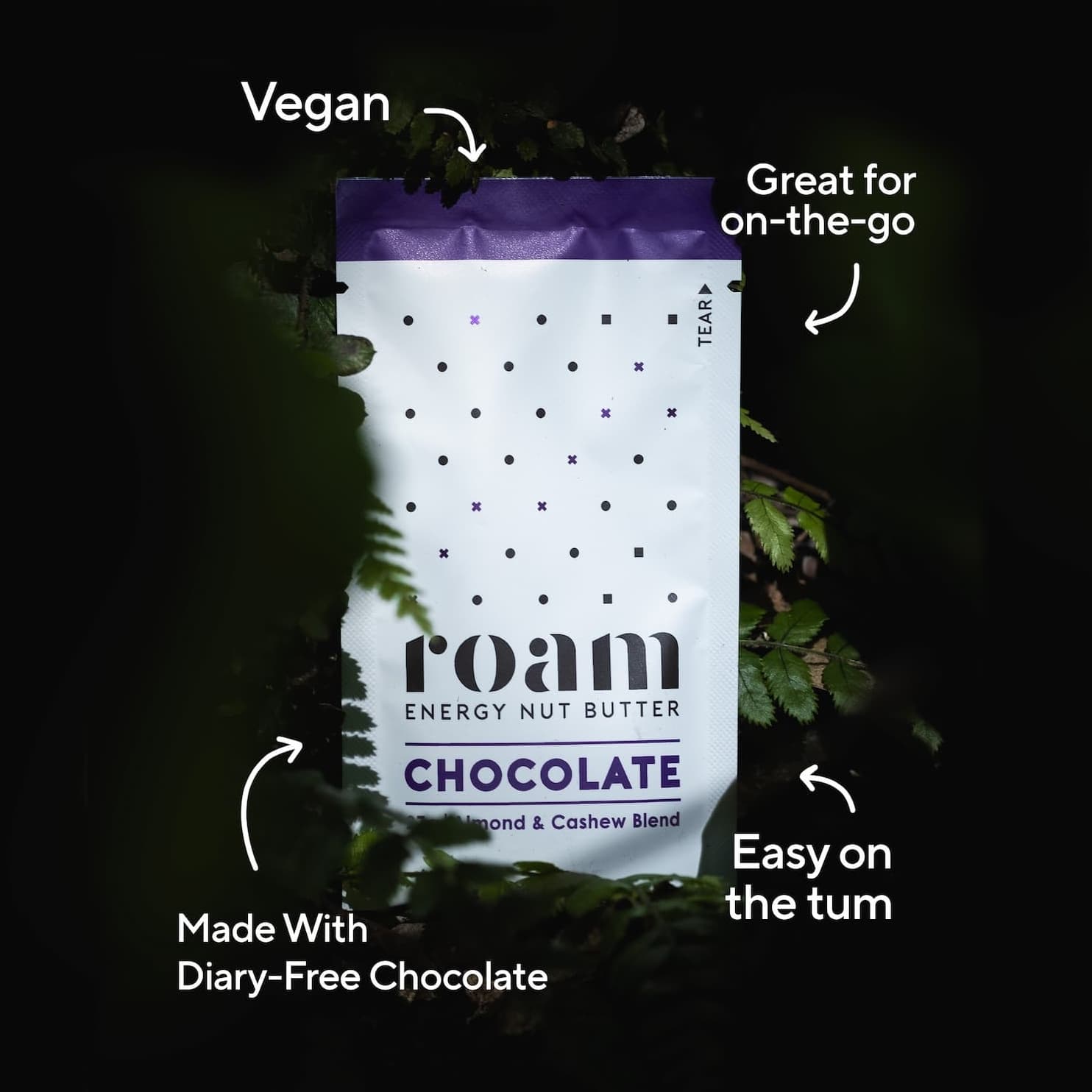Climbing Beyond Limits: Dom Douglas’ Epic Journey on Ama Dablam
Dom Douglas, originally from New Zealand, has spent the last 20 years chasing the thrill of mountains and trails across the globe. With a wealth of experience and a passion for pushing boundaries, Dom is preparing for his most ambitious challenge yet: free-soloing the formidable Ama Dablam in the Himalayas. Supported by Movember, this expedition is not just about reaching the summit—it's about raising awareness for men’s mental health and inspiring others to confront their own challenges.
Dom Douglas on Climbing, Life, and the Ama Dablam Expedition
I've been climbing mountains and trail running all over the world for the last 20 years, always chasing that elusive thrill. If I reflect on my journey, I’ve achieved some cool things (albeit accidentally), met some epic people, and had the opportunity to see and experience some amazing places. But behind every adventure lies a deeper story. For me, the mountains have always been more than just a playground—they've been an escape. As a young guy, I grew up without positive male role models and used the mountains and trails as a way to avoid facing my inner turmoil.
Through climbing, I’ve learned a lot about life and how to be a better person. Everything that can go wrong, will go wrong, and it’s about how you decide to respond. You have to put one foot in front of the other and find something in yourself to keep going. You can’t control the mountain or the weather, but you can control how you manage yourself. From personal experience, I know that you need to learn to turn up for yourself, because no one is going to come and save you. Only you can do that.
This year, my motivation for the epic Movember expedition is all about dreaming big, chasing it, and going full send in what you believe in. I hope to inspire other men to talk up and check in on each other.
What Exactly is Free-Soloing?
Free-soloing is a form of climbing where you climb without ropes, protection, or any partners—just you and the mountain. My plan is to free-solo the ascent of Ama Dablam, a daunting challenge by any measure. But I’m not taking unnecessary risks; I’ll be using ropes and protection for the descent. Gravity is a real thing on the way down!
Safety First: The Strategy Behind the Climb
While reaching the summit is epic, it’s not the be-all and end-all. It’s mandatory to come back down. A lot of people see free solo ascents as dangerous and reckless, but that’s a pretty short-sighted view. Yes, the consequences are higher, but by climbing within your ability and having redundancies in place, you manage many of the risks.
Technically, we’ll be climbing the mountain twice: the first time will be an alpine ascent with two other climbers where we’ll use ropes and place all our own protection. This enables us to get a feel for the mountain and the route, and it also allows us to cache gear high on the mountain for the solo attempt. The second ascent will be the free solo, and once I reach the summit, I’ll descend using ropes and gear.

The Challenges: Yellow Tower and Camp 2
Certain sections of the climb make me nervous, and Yellow Tower is at the top of that list. It just sucks! It’s not necessarily hard in terms of rock climbing grade, but at 6000 metres, wearing full mountaineering gear, and being tired, hungry, and generally hating life, it’s a serious test of endurance. The Tower requires you to traverse about 8 metres out to the right, with 900 metres of exposure below. Don’t look down! After that, you have to climb approximately two rope lengths straight up at a 90-degree angle. And to top it all off, it’s a bottleneck where climbers of all abilities stack up, which isn’t exactly ideal when you’re trying to concentrate.
Another challenging spot is Camp 2, which is super exposed, with all the tents on a slight angle. It looks cool, and the views are amazing—it’s all over Instagram—but there’s literally nowhere to go to the toilet*, so it has decades of human waste stacked up. Imagine walking into the bathroom after your uncle who lives off a diet of beer and meat, times that by 100, and you’re about right. It’s the stuff of nightmares! But yeah, the pics look good.

*Dom is committed to leaving no trace on the mountain. He follows a strict "pack in, pack out" policy, meaning that all rubbish and waste—including human waste—gets carried off the mountain in his backpack.
The Climb Timeline: How Long Will It Take?
We’ll be in the Khumbu Valley for about five weeks. The plan is to arrive early in the season so that we can acclimatise further up the valley on less technical peaks. This reduces many of the risk factors and means we can skip Camp 2 (Camp poo) on the way up. It also means we’ll avoid the crowds that are beginning to form on Ama Dablam these days. All in all, we’re aiming to spend no more than three weeks on Ama Dablam itself for both ascents. That said, everything depends on the weather. We’re pretty stubborn, so we’re happy to sit at the bottom of the mountain reading books, playing cards, eating momo’s, and trail running for as long as it takes!
Fueling the Climb: What Keeps Me Going
You burn an insane amount of calories in the mountains and at altitude, even while sleeping, so it’s super important to keep fueling and stay hydrated. Personally, I like to stick to basic and hearty foods when I’m in Nepal. I also go full vegetarian when I enter the national park—mainly because of the potential for contaminated meat and sometimes questionable food hygiene standards (although this has gotten much better over the years).
The two local dishes I eat every day are Dal Bhat and Momos. Dal Bhat is mostly lentils, rice, and curried vegetables. It’s served everywhere and is the main dish that the locals eat. You usually get heaped plates of this at the good teahouses!
Remember, even when you’re sleeping at altitude, you’re burning crazy amounts of calories, so eat as much as you want. The key is not doing the same at sea level! Momos are the other teahouse staple in Nepal—think dumplings, but better, and fried with the option of local hot sauce, and I mean hot! (There’s also a steamed option for the more health-conscious humans).
When we’re climbing, we keep it pretty basic. High-carb sports hydration drinks are a staple, as is Roam Energy Nut Butter, calorie-dense bars, and chomps. Basically, anything you’d smash on an ultra-trail race, but in larger quantities.
At high camps, water is worth more than gold, so we try to conserve and optimise where possible (the higher you go, the harder it is, and the longer it takes to melt snow and boil water).
With this in mind, noodles and soup are also a favourite. We do sparingly supplement with dehydrated meals because of convenience, but trust me, do not rely on these as your sole source of nutrition or you and your tent buddies are potentially going to go on a wild and uncomfortable ride.
Dark chocolate in large quantities, dried fruit, and nuts with all the salt also make a regular appearance on the mountain. And last but not least, peanut M&M’s. Why? Because I usually have at least one existential crisis and need comforting in a way that only a whole family bag of peanut M&M’s can provide!

Fuel for the mountains

 Energy Nut Butter - Mixed Pack
Energy Nut Butter - Mixed PackEnergy Nut Butter - Mixed Pack
Regular price $27.00 NZD+Unit price per
 Chocolate Energy Nut Butter
Chocolate Energy Nut ButterChocolate Energy Nut Butter
Regular priceUnit price per$67.50 NZDSale price $27.00 NZD+




 Coconut Energy Nut Butter
Coconut Energy Nut ButterCoconut Energy Nut Butter
Regular priceUnit price per$67.50 NZDSale price $21.60 NZD+
 Espresso Energy Nut Butter
Espresso Energy Nut ButterEspresso Energy Nut Butter
Regular priceUnit price per$27.00 NZDSale price $21.60 NZD+












